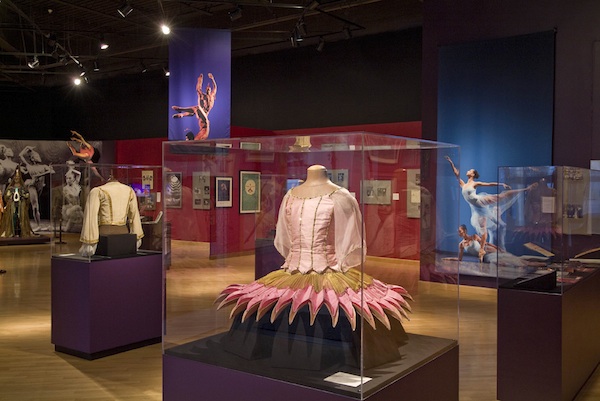
A crash course in dance for a non-dancer
By Gregory Lucas-Myers, Charles H. Wright Museum of African American History
Twice now, I have visited our museum’s recently installed Dance Theater of Harlem: 40 Years of Firsts exhibit. The first time I explored the space, uneasy captivation quickly set-in. Uneasy, not because of anything off-putting, but because of the exact opposite. I can’t quite put it into words. Costumes from a variety of productions, including the famous “Firebird,” sit on faceless mannequins, allowing them to be admired in detail, while videos of the performances play alongside the still life displays, simultaneously allowing appreciation for the centric theme of dance. Signed vintage and contemporary posters, stretching from anniversary shows in New York to world tour stops in Tokyo, feature artwork as creative and dynamic as the dancing itself. The dedication and ingenuity of the dancers is shown in the innovative brown flesh-colored tights and a video detailing rehearsal methods. This is to say nothing of the history and stories detailed in the various panels of text. It is a lot to take in.
…Looking back on the previous paragraph, I see someone who is able to give a good explanation of what they saw, whereas the “me” that visited the first time would’ve stumbled coming up with one. I am an arts person, supportive of art galleries, literature, film, and theatre, the last of which is where dance generally falls (I think). That must have been it, the reason for my unease at the DTH exhibit: I’m not much of a dance guy. I’ll generally enjoy a good play or musical, but put ballet or modern dance in front of me, and I will tune out quickly.
DTH’s pioneering style set a different standard for what dance can be, though. It mixes the grace and poise of ballet with the explosive vivaciousness of the best street-style dancers. Now that I think on it, the groups of “America’s Best Dance Crew” and the street dance performance acts on shows like “America’s Got Talent” and “So You Think You Can Dance” never seem to have a lack of audience appreciation. Everybody is always on their feet and cheering throughout, whether it’s just general performance or set to a theme (“Be a roller coaster!”). But, how many people make the instant connection that these acts, along with ballet, modern dance, and anything else I’ve forgotten in this category, to be “dance?”
Now, that schism is due to a variety of factors that I’m sure someone has written a thesis on somewhere, but “unfamiliarity” is the culprit in my case. The Dance Theater of Harlem exhibit was perfect for exposing me, not only to DTH, but to the world of dance itself.
“DanceTheatreofHarlem: 40 YearsofFirsts” runs through December 31, 2011 at the Charles H. Wright Museum of African American History, the world’s largest institution dedicated to the African American experience. The Exhibition is a project of The New York Public Library for the Performing Arts, Dance Theatre of Harlem and the California African American Museum. For more information please visit www.TheWright.org.
Recent Content
-
Artsarticle ·
-
Artsarticle ·
-
Artsarticle ·

